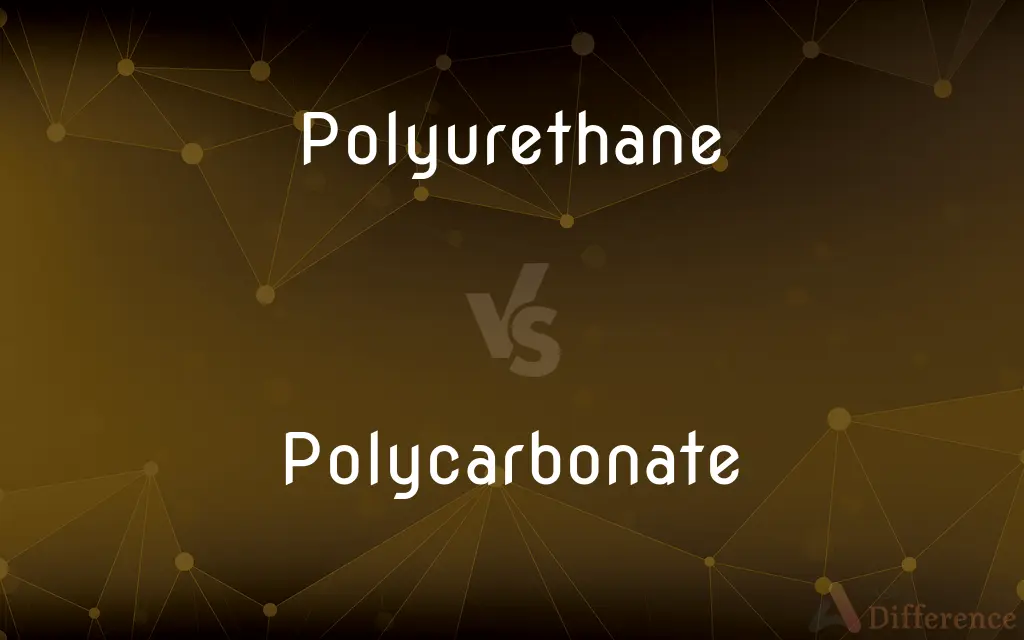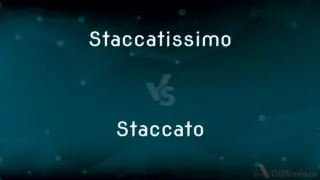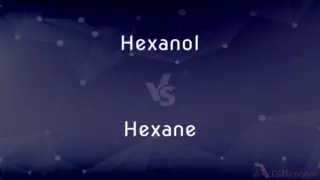Polyurethane vs. Polycarbonate — What's the Difference?
By Maham Liaqat & Fiza Rafique — Updated on March 26, 2024
Polyurethane is flexible and used in foams and coatings, while Polycarbonate is rigid and used for impact-resistant applications.

Difference Between Polyurethane and Polycarbonate
Table of Contents
ADVERTISEMENT
Key Differences
Polyurethane is a versatile polymer used in a wide range of products, from flexible foams in upholstery to durable coatings for floors and furniture. Its flexibility and durability make it ideal for applications requiring a combination of elasticity and toughness. On the other hand, Polycarbonate is a tough, transparent plastic known for its high impact resistance, commonly used in bulletproof glass, eyewear lenses, and compact discs. This stark contrast in physical properties highlights the different engineering applications each material is suited for.
While polyurethane can be formulated to be either rigid or flexible, its most notable applications take advantage of its elasticity. This makes it perfect for comfort and cushioning solutions, as well as in the automotive industry for parts that require flexibility, such as seals and gaskets. Polycarbonate, however, is celebrated for its rigidity and strength, making it the material of choice for protective gear, electronic devices, and other applications where durability and transparency are critical.
In terms of chemical resistance, polyurethane stands out for its resistance to abrasion, solvents, and oil, which makes it suitable for protective coatings on wood, metal, and other materials. Polycarbonate, while resistant to impact, is more susceptible to scratches and requires a protective coating to maintain its clarity and resist chemical degradation. This distinction is crucial for manufacturers when selecting materials based on environmental exposure and the type of protection needed.
When it comes to thermal insulation, polyurethane's applications in insulation foams offer superior thermal resistance, making it an excellent choice for building insulation, refrigeration, and thermal wear. Polycarbonate, despite its strength, does not provide the same level of thermal insulation but excels in situations where thermal stability (i.e., maintaining its form in varying temperatures) is more important than preventing heat transfer.
The environmental impact and recyclability of both materials also differ. Polyurethane, especially when used in foam applications, can be difficult to recycle due to its cross-linked structure. Meanwhile, Polycarbonate is more easily recycled, which makes it a more environmentally friendly option for products where recycling at the end of the product's life is a consideration.
ADVERTISEMENT
Comparison Chart
Flexibility
Can be very flexible or rigid.
Generally rigid.
Applications
Foams, coatings, flexible components.
Bulletproof glass, lenses, durable sheets.
Impact Resistance
Lower than polycarbonate.
High impact resistance.
Chemical Resistance
Good against abrasion, solvents.
Susceptible to scratches without coating.
Thermal Insulation
Excellent in foam form.
Not used for insulation, but thermally stable.
Compare with Definitions
Polyurethane
A versatile polymer used in flexible and rigid products.
The sofa's soft cushioning is thanks to polyurethane foam.
Polycarbonate
A strong, transparent plastic with high impact resistance.
Safety goggles are often made from polycarbonate for clear vision and protection.
Polyurethane
Known for its durability and resistance to abrasion.
Polyurethane coatings protect wooden floors from scratches.
Polycarbonate
Subject to scratching, usually coated for protection.
Smartphone screens use coated polycarbonate to resist scratches.
Polyurethane
Can be tailored to a wide range of hardness.
Polyurethane wheels combine hardness with elasticity for smoother rides.
Polycarbonate
Used in applications requiring transparency and strength.
Polycarbonate panels are used in greenhouses for their durability and light transmission.
Polyurethane
Widely used in automotive and industrial applications.
Car interiors utilize polyurethane for seats and dashboards.
Polycarbonate
Recyclable, making it environmentally preferable in some uses.
Recycled polycarbonate is used to produce eco-friendly consumer goods.
Polyurethane
Difficult to recycle due to its structure.
Recycling polyurethane foam requires specialized processes.
Polycarbonate
Maintains properties across a wide temperature range.
Outdoor lighting fixtures use polycarbonate covers to withstand weather conditions.
Polyurethane
Polyurethane (often abbreviated PUR and PU) is a polymer composed of organic units joined by carbamate (urethane) links. In contrast to other common polymers such as polyethylene and polystyrene, polyurethane is produced from a wide range of starting materials (monomers) and is therefore a class of polymers, rather than a distinct compound.
Polycarbonate
Polycarbonates (PC) are a group of thermoplastic polymers containing carbonate groups in their chemical structures. Polycarbonates used in engineering are strong, tough materials, and some grades are optically transparent.
Polyurethane
A synthetic resin in which the polymer units are linked by urethane groups, used chiefly as constituents of paints, varnishes, adhesives, and foams
Five coats of polyurethane
Polyurethanes serve a variety of uses
Polycarbonate
Any of a group of thermoplastics that are linear polyesters of carbonic acid, especially those derived from bisphenol A and phosgene, characterized by high-impact strength, light weight, and flexibility, and used as shatter-resistant substitutes for glass.
Polyurethane
Coat with polyurethane paint or varnish
The sanded and polyurethaned floorboards
Polycarbonate
(chemistry) Any of a range of polymers of aromatic carbonates; they are used to make light, flexible alternatives to glass. Abbreviation: PC
Polyurethane
Any of various thermoplastic isocyanate polymers, widely varying in flexibility, used in tough chemical-resistant coatings, adhesives, and foams.
Polyurethane
(organic chemistry) Any of various polymeric resins containing urethane links; used in very many industrial and domestic applications.
Polyurethane
Any polymer containing [-NH.CO.O-] linkages; such polymers are much used as the basis of light but rigid foams for packaging (polyurethane foam) and for hard coatings, as on floors.
Polyurethane
Any of various polymers containing the urethane radical; a wide variety of synthetic forms are made and used as adhesives or plastics or paints or rubber
Common Curiosities
Can polyurethane be recycled?
Recycling polyurethane is challenging due to its cross-linked structure, but advancements are being made in chemical recycling methods.
Why choose polyurethane over polycarbonate?
Polyurethane is chosen for its flexibility, cushioning properties, and chemical resistance, while polycarbonate is preferred for its strength and clarity.
What is polyurethane used for?
Polyurethane is used in flexible foams, coatings, adhesives, and elastomers due to its versatility and durability.
What is polycarbonate used for?
Polycarbonate is used in bulletproof glass, eyewear lenses, and other applications requiring high impact resistance and transparency.
How are polyurethane and polycarbonate made?
Both are synthesized through chemical reactions involving monomers, but their specific processes and raw materials differ.
What makes polycarbonate impact-resistant?
The molecular structure of polycarbonate allows it to absorb and distribute impact energy, making it highly resistant to breakage.
Is polycarbonate environmentally friendly?
Polycarbonate is more easily recycled than polyurethane, making it a more sustainable option for certain applications.
Are there environmentally friendly alternatives to polyurethane?
There are bio-based polyurethanes made from renewable resources, offering more sustainable alternatives to traditional fossil-fuel-based polyurethanes.
How can the impact resistance of polycarbonate be tested?
Impact resistance is tested using standard industry methods, such as the Izod impact strength test or the Charpy impact test.
How does polycarbonate compare to glass?
Polycarbonate is lighter and significantly more impact-resistant than glass, though it can scratch more easily without a protective coating.
Can polycarbonate withstand high temperatures?
Polycarbonate has a high thermal stability, maintaining its form in temperatures up to approximately 280°F (138°C).
What are the disadvantages of polyurethane?
Polyurethane can degrade in UV light and may require protective coatings for outdoor use.
Is polycarbonate suitable for outdoor applications?
Yes, with UV-stabilizing coatings, polycarbonate is widely used in outdoor applications for its durability and weather resistance.
What are the health concerns associated with polyurethane?
The production and degradation of polyurethane can release toxic compounds; however, cured polyurethane is generally considered safe.
Can polyurethane be used in clothing?
Yes, polyurethane is used in the production of spandex and other elastic textiles.
Share Your Discovery

Previous Comparison
Staccatissimo vs. Staccato
Next Comparison
Hexanol vs. HexaneAuthor Spotlight
Written by
Maham LiaqatCo-written by
Fiza RafiqueFiza Rafique is a skilled content writer at AskDifference.com, where she meticulously refines and enhances written pieces. Drawing from her vast editorial expertise, Fiza ensures clarity, accuracy, and precision in every article. Passionate about language, she continually seeks to elevate the quality of content for readers worldwide.














































